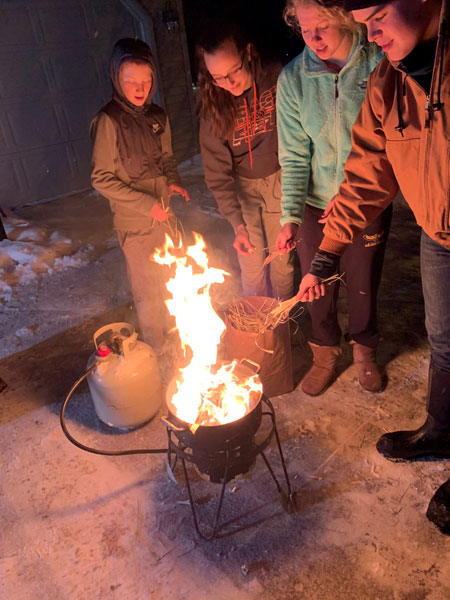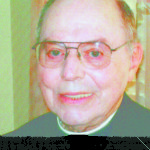By Anne Marie Amacher
The Catholic Messenger
The 2020 Lenten season begins on Ash Wednesday, Feb. 26. During Ash Wednesday Masses, priests, deacons and other trained laypersons will place ash crosses on the foreheads of the faithful, citing either “Repent, and believe in the Gospel” or “Remember that you are dust, and to dust you shall return.” But, where do the ashes that are used on Ash Wednesday come from?

Most parishes purchase ashes through a religious supplier. However, some parishes in the Diocese of Davenport make the ashes on-site. In both cases, ashes are made by burning palms from the previous year’s Palm Sunday Mass.
Father Bernie Weir, pastor of St. James Parish in Washington, said he burned palms to make ashes for the first time when he was in Columbus Junction in the 1990s. “I had a standing order for ashes and palms,” he said. “I had no idea where either came from,” so he decided to make the ashes himself.
The next year, he invited youths from the parish to assist.
He continued the tradition with youths in Ottumwa following a transfer to St. Mary of the Visitation Parish, and later with youths at St. James, where he has served since 2014. This year he went a step further and opened it to all St. James parishioners, hosting the palm burning on adult faith formation night, Feb. 18.
To gather palms for the ashes, Father Weir places a note in the bulletin about three weeks in advance of the burning, asking parishioners to bring in their palms. “I have some in reserve from last year so I can make sure I have enough.”
Palm-burning participants help Father Weir each year by cutting the palms into 3-5-inch strips. If a palm was braided, it is cut up. The palms are placed on a grate with a pan, which is then placed in a wood fire grill. “They burn real fast.” Once all the burned palms cool down, Father Weir places them in a blender to give a better texture and take out any chunks that may not have burned completely. “I add a little olive oil after the blender to help it stick better,” he said.
Father Weir offers a prayer service at the burning as well. The service includes a Scripture reading and prayer written by participants, who usually stick around for fellowship.
Father Weir said the burning of the palms gets kind of dirty, but it is a good project to get parishioners involved. “It creates meaning for some. Personally, I enjoy it. It’s a tradition that has been lost.”
Prince of Peace Parish in Clinton is another parish that burns old palms to make ashes. Brenda Bertram, director of religious education, said clergy and volunteers burn the palms the Tuesday before Ash Wednesday, following night Mass.











